Maturity


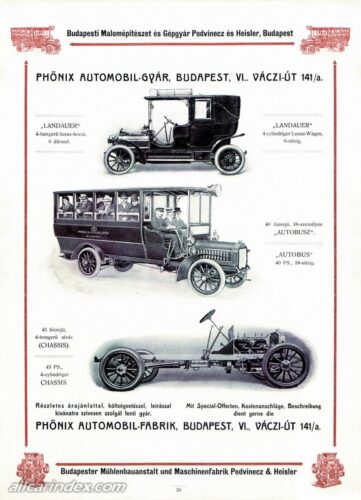
By the beginning of WWI Budapest had become a true European Metropolis. Electricity had reached the outskirts of the city, even the nearby towns, and the electric tram had become a daily routine for the residents of the capital. Public telephones were already in use and two large automotive companies based in the capital constructed everything from taxi cabs to buses.
The Jewish population of the city had been decimated after the reconquest of 1686. In the mid-1700s a new wave of settlers coming mostly from Czech and German territories moved to Budapest. Although tensions with the Christian population were not uncommon the Jewish community grew significantly during the 1800s. Jewish merchants and craftsmen thrived in Obuda. Jewish linen weavers and silversmiths were well-known in the city. Obuda was the only city in the Hapsburg Empire where Jews were free to carry out certain trades.
Between 1867 (the year of the Austro-Hungarian Compromise) when the Hungarian Parliament approved a bill in favor of Jewish emancipation & WWI the Jewish population grew to such a point that the city was often called Judapest or Jewish Mecca. The overall percentage reached 25% of the capital’s population by 1914. The Budapest University of Jewish Studies (established in 1877) and hundreds of Synagogues, Jewish hospitals, orphanages, and guilds all established during that period, stood as proof of that growth.

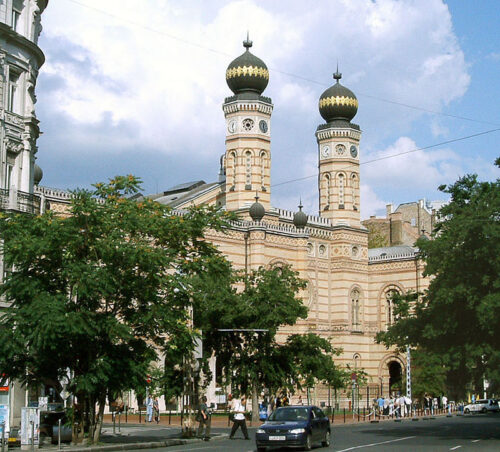
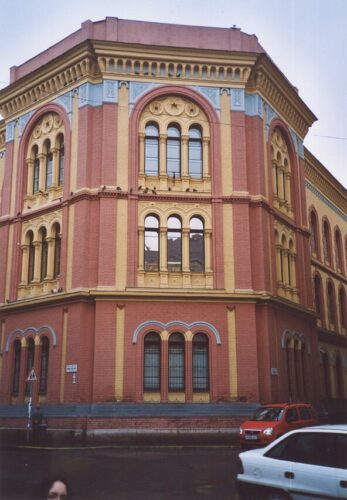
In World War I Hungary suffered unprecedented human and financial losses, and the Austro-Hungarian Empire collapsed. The city itself however stood more glorious than ever, with monumental structures like the Heroes’ Square, the Fisherman’s Bastion, the Hungarian Parliament Building, Gresham Palace, Vajdahunyad Castle, the Hall of Art & the Museum of Fine Arts, all completed by the end of the war, giving the Hungarian capital some basic elements of the fairytale-like appearance we know today.

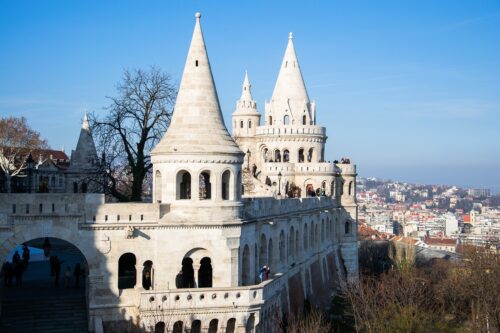

The shaky social-democratic coalition government that was formed after WWI was very quickly overshadowed by the star of the Communist leader Béla Kun. A radical ultra-left communist with strong ties in Moscow, Kun attracted all of Budapest’s left-wing intelligentsia along with a sizable group of Social Democrats who supported him to establish the first Soviet Republic in Europe after Russia (21 March 1919).


Within its first two months, the communist government unleashed a wave of revolutionary terror. Red terror had as a goal to find and violently crush all counter-revolutionary activities in Budapest & the Hungarian countryside. The so-called Lenin Boys sought out the enemies, among them many Social Democrats, arrested them, looted their homes & sometimes executed them. More than 500 people were executed for “crimes against the revolution”.



Among other things, Kun had promised to restore Hungary to its former borders. The unsuccessful effort of the small volunteer red army to recapture Transylvania from the Romanians would be the end of the three-month government. At the beginning of August 1919, the Romanian army was marching in the streets of Budapest. Bela Kun and the rest of the high-ranking Communists had already fled across the border to Austria.



Admiral Miklós Horthy, a WWI veteran hero took over the command of a counter-revolutionary army named the National Army which took control of Budapest in November 1919. Four months later the National Assembly of Hungary re-established the Kingdom of Hungary and appointed Admiral Horthy as regent (the restoration of the Habsburg former King Charles IV on the throne was something the winning alliance of the Triple Entente could not allow).
The period that followed became known as the period of White Terror. Brutal retaliation against known or suspected communists such as murders, tortures, and humiliation, even hangings in public places was the answer for those who suffered from the communist regime & those who wanted to suppress the spread and popularity of the communist ideology.




When WWII came, Hungary was aligned with the Axis powers, against the winners of WWI in hope of restoring the territories lost after WWI. Nationalism and Antisemitism became prevalent. Fascism became the norm. In a population of 1.5 million permanent residents, the Jewish population had peaked reaching 250.000 people just before the war.
125 Synagogues operated in the city. Although Regent Horthy resisted German pressure and refused to allow the deportation of Hungarian Jews to the German extermination camps more than 15.000 Jews from Budapest were killed in forced labor units of the eastern front.
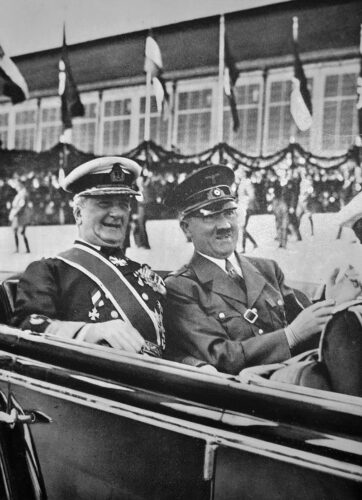

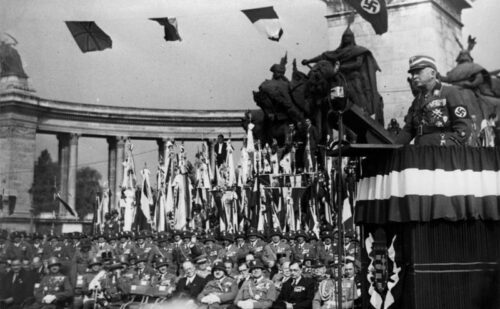
By the beginning of 1942, Horthy was already seeking a way out of his alliance with Hitler. With the Soviet Army advancing from the east, after the Battle of Stalingrad, it became evident that the Allies would probably win the war. By the Summer of 1943, the Hungarian government had started secret contacts for the terms of a future surrender to the Allies.
Although the Axis was losing the war, Hitler could not allow Hungary to leave his alliance. In March 1944 the German Wehrmacht invaded Hungary and in a few days, a puppet regime run by the German plenipotentiary in Budapest, Edmund Veesenmayer, and Ferenc Szálasi, the leader of the anti-Semitic and pro-Nazi Arrow Cross Party was installed in the Hungarian capital. Adolf Eichmann, the orchestrator of the Jewish holocaust “set up his office” in Budapest.



All people of Jewish descent were immediately denied freedom of movement and were forced to wear a yellow badge. In June the Mayor of Budapest designated 2.000 starred houses scattered around the city and on July 6, more than 40.000 Jews from the suburbs of Budapest were deported to Auschwitz. On November 8, 1944, 70.000 Jews—men, women, and children were rounded up in the brickyards of Obuda and were forced to march on foot to the death camps of Austria. Thousands died before even reaching the camps.



At the end of November 1944, the Jewish ghetto in the area of the old Jewish quarter (around the Great Synagogue of Dohány Street) was surrounded by a high fence, the stone wall was set up and 70.000 people were forced to move in. Thousands more were executed on the banks of the Danube with their bodies thrown into the river. Between October 1944 and February 1945 nearly half, of the Jewish population of the city (about 100.000 or more) had perished.



At a time of horror, a special mention should be given to a hero whose story is not that well known. His contribution however to the rescue of thousands of Jewish lives became one of the most miraculous acts of WWII. Raoul Wallenberg, a Swedish businessman recruited by the War Refugee Board (created by President Franklin D. Roosevelt in January 1944 as a buffer to the Nazi persecutions) first managed to issue more than 9.000 protective passports, to prevent the same amount of deportations.
He then rented (with the money raised by the board) 32 buildings around the city, that were characterized as diplomatic and bore the flags of Sweden (which was a country neutral in WWII) and ended up housing almost 10.000 persecuted Jews. He finally succeeded, through bribes, threats, and fervent negotiations with Eichmann and the supreme commander of the German forces in Hungary, to postpone Eichmann’s plan to blow up the Budapest ghetto, saving the lives of more than 70.000 people.



In November 1944, Soviet and Romanian troops entered the eastern suburbs of Budapest. By December the city was completely cut off from the rest of the world. 33.000 German and 37,000 Hungarian soldiers, along with 800.000 citizens were trapped in what was according to Hitler a “fortress city that had to be defended to the last man”.
By the time the last German and Hungarian troops finally surrendered on February 13th, 1945, the city lay in ruins. About 80% of its buildings were either destroyed or damaged, among them the Hungarian Parliament and the Royal Castle. All seven bridges connecting Buda with Pest had been blown to pieces.



After the war, Hungary was occupied by the Soviets and Budapest became one of the capitals of the communist Eastern Bloc. Massive deportations of Hungarian citizens to forced labor camps of the Soviet Union started taking place even before the country was officially declared a communist state.
In August 1949, the country was declared a People’s Republic, and the presence of Soviet troops in Hungary and Budapest was formalized with a treaty granting them the right to a permanent stay.


Although the reconstruction of the infrastructure progressed relatively fast, the Stalinist era was mainly remembered for the deterioration of the standard of living, the decline of the economy, the chronic shortages in basic foods & goods, and most of all the political repression.


After a decade of oppression and flagrant violations of fundamental human rights, the situation had come to a boiling point. On 23 October 1956, 20.000 protesters gathered around the statue of József Bem, a hero of the Hungarian Revolution of 1848, in Budapest. In a few hours, the crowd had increased to more than 200.000 people, chanting a censored patriotic poem known as the National Song. In a wave of enthusiasm, the demonstrators reached the Parliament building while others dismantled a 25 meters tall statue of Stalin that had been erected on the edge of Városliget city park, 2 years earlier.



Things escalated quickly with armed clashes between revolutionaries and forces of the Soviet regime, ending with dozens of deaths and the collapse of the government. On November 4, 1956, a large joint military force of the Warsaw Pact, led by Moscow, entered Budapest to crush the armed resistance. After 6 days of heavy fighting, 2.500 dead Hungarians & 700 Soviets, and more than 20.000 wounded, the city had been again turned into a pile of rubble and the revolution was crushed.


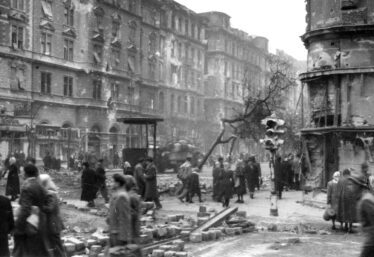
After the revolution the Hungarian Socialist Workers’ Party, a Marxist party that initially supported the revolution but changed sides when its leaders denounced the Warsaw Pact, took over the helm of the country with the support of the Soviets. What followed in the country and its capital became known as Goulash Communism, a more moderate, more liberal form of communism that helped Hungary become a paradigm of a relatively bearable reality for the rest of the communist countries and Budapest a destination for tourists.
The reconstruction of the city and its infrastructure progressed satisfyingly during the 60s and 70s. The old city center and the castle quarter were renovated, all the bridges were restored and the underground network was expanded. The neighboring towns were absorbed by the sprawling capital which reached a population of 2 million people by 1970. It would now be comprised of 22 different districts, many of them created by large-scale construction of blocks of flats, along the lines and general aesthetic of soviet pragmatism.
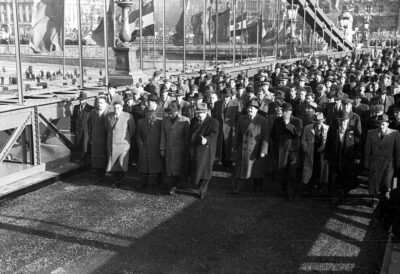


Inflation, poverty, and massive public debt in the1980ss rocked the foundations of the communist structure, pairing political instability with economic woe,s, especially after 1985. On March 15t,h 1988, on the anniversary of the Hungarians’ 1848 uprising against Habsburg rule, large numbers of people risked demonstrating to call for press freedom in the largest unofficial demonstration of the communist period until that time.
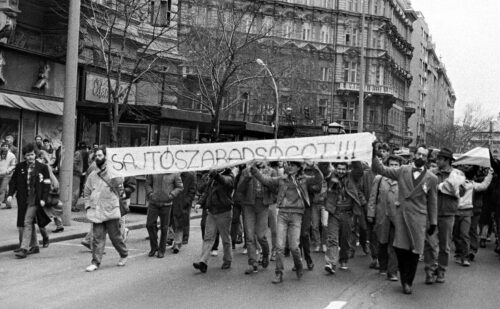

Two large demonstrations took place on June 27th on Heroes’ Square protesting the policies of Ceausescu against the Hungarians living in Romania and one in October of 1988 against the scheduled building of a hydroelectric power plant right on the front of the Danube, a time when large-scale gatherings were only permitted on communist celebration days.
The social unrest led to the adoption of a democracy package by the parliament in January 1989. That would be the first of a series of events that would quickly unravel the communist restrictions that year. In May 1989 Hungary begins to dismantle its fences along the border with Austria and in June more than 100.000 people gather to honor a former prime minister that was executed after the revolution of 1956 in what became the most massive anti-Soviet demonstration in the history of Hungary.



On October 23rd, 1989, on the 33rd anniversary of the Revolution of 1956, a few days before the official fall of the Berlin wall, the communist People’s Republic of Hungary ceases to exist. The 3rd Republic of Hungary is inaugurated in an official ceremony before the Hungarian Parliament and thousands take the streets to celebrate the beginning of the new era.



Privatizations and western investments revived the Hungarian economy with Budapest concentrating the main bulk of the country’s capital. The Lagymanyosi Bridge, the new National Theatre, and the National Concert Hall have all been added to the Hungarian capital’s rich ensemble, while the Liberty Bridge and Margaret Bridge have been completely reconstructed since the fall of Communism.



Today Budapest is a significant Central European metropolis, a major economic hub with a GDP per capita in purchasing power parity, 1 of 47% of the EU average. Especially during the 2010s Budapest excels in every given economic index (worldwide commerce, emerging markets, innovation, research, technology, start-up activity) including that tourism. The Hungarian capital is among the 25 most visited cities in the world, welcoming more than 4.4 million international visitors each year.
With numerous landmark buildings and museums, amazing parks, a rich multicultural tradition, and a bustling nightlife. It is no wonder that the robust metropolis keeps stealing the hearts of an increasing amount of people who choose Budapest as their next European city break or their next permanent location. The chance to visit the city could easily convince anyone that the title “Jewel of the Danube” is not just a catchy euphemism.







